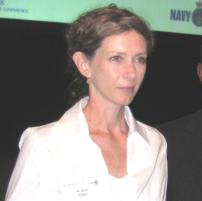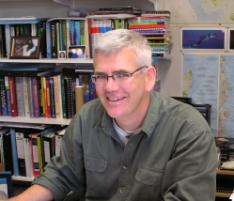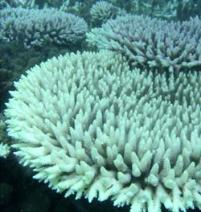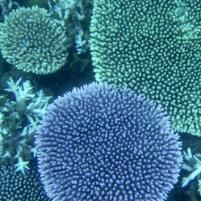Keppel corals form new heat-beating partnerships
Published on 19 March, 2008
CQU researchers are involved in the first observation of its kind - a coral community in the southern inshore region of the Great Barrier Reef is showing signs of adjusting to higher sea surface temperature by quickly changing its main algal partners to types that can better cope with the heat.
University PhD student Alison Jones (lead author) and researcher Dr Billy Sinclair (contributor) have helped produce a new publication about the observation.

Alison Jones
An Australian Institute of Marine Sciences (AIMS) field study near Miall Island, part of the Keppel group of 15 islands on the southern Great Barrier Reef off the Queensland coast near Rockhampton, has revealed a remarkable feat of acclimatisation; the only time such an event has been observed in natural conditions on a coral reef.
The work, which appears today (Thursday, March 20) in the prestigious UK scientific journal the Proceedings of the Royal Society*, has shown that a phenomenon known as "symbiont shuffling" took place after a bleaching event in 2006 in the Acropora millepora coral population studied.
According to Alison Jones, this means that of the range of algae available to live in partnership with the corals, the ones best suited to helping reef-building corals beat the heat have come to dominate.
Corals survive by hosting single-celled algae known as zooxanthellae in their tissues. It's the heat tolerance of the algae that determines the fate of the coral, and the range of temperatures that can be tolerated by different kinds of zooxanthellae is quite wide. When the tolerance threshold is reached, zooxanthellae may be lost from the coral, causing coral bleaching and often the death of the coral.

Dr Billy Sinclair
The AIMS researchers found that the corals in the Keppel area now have a much higher proportion of 2 more thermally tolerant strains of zooxanthellae living in them than they did before the 2006 bleaching event, and therefore they are better able to cope with higher sea surface temperatures.
"There has been a dramatic shift in the Miall Island coral's symbiotic community, mainly as a result of the change in the predominant algal types after bleaching," Ms Jones said.
The researchers sampled and tagged colonies before and after the bleaching event and were able to show that while before the 2006 bleaching event about 94 per cent of the algae in the corals in the population were thermally sensitive, after the event about 71 per cent of the surviving tagged colonies had the more heat-tolerant strains of algae living in them.
"This work shows that the symbiont communities of inshore corals such as those in the Keppels are much more dynamic than we have given them credit for so far," AIMS scientist and co-author Dr Ray Berkelmans said. "This may give them a natural advantage over those corals without this flexibility to change predominant symbiont type."
"We argue that if this shift is sustained and community wide, the reefs in this area are likely to have substantially increased their capacity to withstand the next bleaching event."


The researchers caution against generalising from this population to the rest of the GBR. Dr Berkelmans said that while this work was welcome news for the Keppel Island reefs, it could not be applied across the whole reef. The particular kind of algae examined in this study is common on inshore reefs such as the Keppels but rare in Acropora species elsewhere on the GBR.
Coral reefs are extremely vulnerable to climate change and without rapid adaptation and acclimatisation over the next 50 years, they are unlikely to survive a warming planet.
The incidence of bleaching has been rising on the GBR (and on reefs around the world) for about a decade as sea surface temperature warms and global climate changes. Bleaching is seen by marine scientists as one of the biggest threats to the survival of coral reefs.
*The Proceedings of the Royal Society B paper, written by AIMS scientists Alison Jones, Ray Berkelmans, Madeleine van Oppen and Jos Mieog, with William Sinclair from Central Queensland University, is titled "A community change in the algal endosymbionts of a scleractinian coral following a natural bleaching event: field evidence of acclimatization".
For further information, please contact: Alison Jones Ph: 0408 068128 E-mail: a.jones@aims.gov.au, Dr Ray Berkelmans
Ph: 07 4753 4268 E-mail: r.berkelmans@aims.gov.au, Wendy Ellery AIMS Media Liaison Ph: 07 4753 4409; 0418 729 265
E-mail: w.ellery@aims.gov.au

